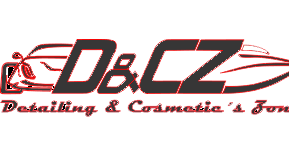Content
Once the software testing phase is over and no bugs or errors left in the system then the final deployment process starts. Based on the feedback given by the project manager, the final software is released and checked for deployment issues if any. The activities of the software development process represented in the waterfall model. The product leaves the testing phase and is ready to go into production. Some projects require the team to write user manuals or create instructional videos before the software becomes available to end users. The most flexible of the SDLC models, the spiral model is similar to the iterative model in its emphasis on repetition.
The term was coined in the year 2001 when the Agile Manifesto was formulated. The upper section of the WBS provides an overview of the project scope and timeline. WBS elements consist of milestones and tasks to be completed rather than activities to be undertaken and have a deadline. Parts of the project needing support from contractors should have a statement of work . The development of a SOW does not occur during a specific phase of SDLC but is developed to include the work from the SDLC process that may be conducted by contractors.
What is SDLC?
The team often goes back a step or two in the SDLC to perform fixes or make improvements. Developers create a version very quickly and for relatively little cost, then test and improve it through rapid and successive versions. One big disadvantage here is that it can eat up resources fast if left unchecked.
They need to be measurable, testable, and relate to the business need or opportunity identified in the Initiation Phase. The Feasibility Phase is the initial investigation, or brief study of the problem to determine whether the systems project should be pursued. A feasibility study established the context through which the project addresses the requirements expressed in Business Case and investigates the practicality of a proposed solution. The feasibility study is used to determine if the project should get the go-ahead.
Software Management
Fundamentally, SDLC trades flexibility for control by imposing structure. It is more commonly used for large scale projects with many developers. The final phase of the SDLC is to measure the effectiveness of the system and evaluate potential enhancements. For example, as the system analyst of Viti Bank, you have been tasked to examine the current information system.

This is where the software’s architecture, user interface, and data model are designed. This phase also includes creating technical specifications and identifying the components and modules necessary for building the software. It provides a framework for ensuring that software is developed in a structured and organized manner, focusing on reliability and improving quality. Utilizing the SDLC helps ensure that software meets the needs of its users and stakeholders and is delivered on time and within budget.
Phase 7: Maintenance
At the end of a sprint, the product owner verifies the code and greenlights its deployment to users. The team then gathers feedback and starts preparing for the next sprint. While every SDLC is unique, all life cycles go through similar steps. Let’s take a close look at every typical phase of an average software development life cycle. Once the requirement analysis is done the next step is to clearly define and document the product requirements and get them approved from the customer or the market analysts.
First, the throw-away prototyping model will discard any prototyped code before writing the real software product. On the other hand, the evolutionary prototyping model builds on the prototype, turning it into functioning and polished software over time. Additionally, we once again don’t start the next phase of the SDLC until the previous phase has completed. This methodology works well for projects that require a lot of control and have clearly defined and unchanging requirements. This becomes more and more difficult with our ever-changing technical landscape.
The DevOps engineers are responsible for coordinating the development and deployment procedures so that they correspond to the operation. Combining these two parties into a single team helps the project organization and further automation. In case you are looking for a convenient way to release the database faster and safer via automation, visit our website. In the V-shaped model, the development branch is mirrored by the testing one.
Development
Though other methodologies haven’t received as much press recently, it’s still valuable to understand them and know what advantages and disadvantages exist for each. That’s because ultimately these methodologies represent additional tools in your toolbelt. And with knowledge, you’ll have the ability to solve a wider variety of problems. Once the design specification is prepared, all the stakeholders will review this plan and provide their feedback and suggestions. It is absolutely mandatory to collect and incorporate stakeholder’s input in the document, as a small mistake can lead to cost overrun. Here at Django Stars we apply our extensive knowledge in both tech and business domains to help our partners build products from scratch, go through digital transformation, and scale.
- This may involve training users, deploying hardware, and loading information from the prior system.
- The development team fixes the bug and send back to QA for a re-test.
- The project team tests the software to ensure it meets the previously discovered needs and requirements and is free of bugs.
- For a product team, this phase would include determining the priority order of the proposed work, building a product roadmap, and obtaining stakeholder agreement on it.
- This high-level description is then broken down into the components and modules which can be analyzed, designed, and constructed separately and integrated to accomplish the business goal.
- Each team member must be able to synchronize their efforts with that of their colleagues.
It can be complicated to estimate the overall cost at the beginning of a project. DbForge Studio comes with an advanced entity-relationship diagram design tool aimed at designing database schema diagrams and visualizing your database as an Entity Relationship Diagrams . DbForge Database Diagram Designer combines Database Diagram, Database Modeling, and Table Designer utilities to help you effectively perform various database tasks. The cost may be rather high as taking many iterations results in long-term project completion. Monitor and track the project’s progress, and adjust the plan as needed. Time and cost, especially if the development method leaves zero room for flexibility or iteration.
Agile Model in SDLC
The second step of SDLC is gathering maximum information from the client requirements for the product. Discuss each detail and specification of the product with the customer. The development team will then analyze the requirements keeping the design and code of the software in mind. Further, investigating the validity and possibility of incorporating these requirements into the software system. The main goal of this stage is that everyone understands even the minute detail of the requirement. Hardware, operating systems, programming, and security are to name the few requirements.
Driving the SDLC: Roles and Responsibilities in Software Development
Without setting goals, we have don’t know what we’re trying to accomplish and have no… In other words, an agile organization can successfully adapt the SDLC framework to its development model. With the software now live and being used by customers, the development team’s focus will shift to maintaining it. The first stage of new software development will gather all relevant information from stakeholders and analyze this information to determine what will be feasible. Your new goal is to keep this product alive (that’s why it is sometimes called the maintenance phase), develop it further, and attract new groups of customers. It’s time to make money, show a good ROI to your investors, and consistently head towards fulfilling your vision.
You have to perform all the resource, cost, and time-related analyses at this step only; otherwise, your project can face non-preventive risks in the future. Once you are done with all the planning and ready with your project charter and other crucial plans, you can initiate the designing phase. Every detail you gather at this stage is essential, as it helps to make relevant decisions about the project, such as complexity, technology to be used, time-to-market, and so forth.
Today, according to StackOverflow, 85% of developers use Agile approaches while working on software products. The Agile SDLC model presupposes breaking the development into smaller iterations (so-called sprints) rather than building a product as an integral. This model consists of small repetitive iterations that are aimed at a relatively quick and cheap production with subsequent testing and enhancement.
Across the testing phase, a series of functional and non-functional assessments are conducted. Automated testing has gained more momentum lately since the process ensures a secure and continuous what are the software development models run of the software and produces correct data for everyone to consider and derive conclusions. One of the prerequisites for automated testing is continuous integration tools.
Types of SDLC: Software Development Models with Examples
Additionally, just implementing agile on a development team doesn’t complete the transformation to an agile organization. In fact, it requires organizational changes to allow for the self-sufficiency of agile development teams. Choosing the right SDLC methodology for your software development project requires careful thought. But keep in mind that a model for planning and guiding your project is only one ingredient for success. Even more important is assembling a solid team of skilled talent committed to moving the project forward through every unexpected challenge or setback. This is the final stage of the development, release, or integration of the ready solution.
At this stage, the team is confident it has fixed all defects and that the software has been built to the agreed-upon goals and specifications. This guide will show you how the process of fitness app development looks like…. Unlock the hidden potential of data to drive tangible business results.

 El carrito está vacío
El carrito está vacío
Leave A Comment